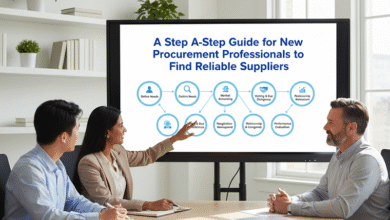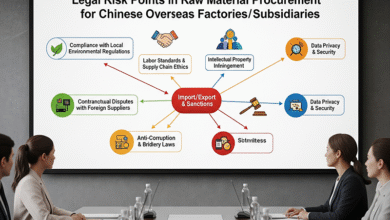Six-Stage Procurement: From Executor to Strategist
Transform Your Team from Executors to Trusted Strategic Partners


In supply chain management, procurement is no longer just “buying.” Instead, it has become a key strategic driver for businesses. The Six-Stage Procurement Model is a proven leap from passive executors to strategic collaborators. Yet traditionally, many still view procurement as simple tasks—like “sourcing goods” or “negotiating prices.” This narrow view only covers its most basic stage.
To unlock its full potential, we need to reframe procurement functions with a fresh perspective. The Six-Stage Model advances step by step. Moreover, it clearly maps a path from reactive work to proactive strategic leadership. It’s also a dynamic skill-up system: as procurement teams build expertise, they progress through stages. Below, we break down each stage in detail. This breakdown helps procurement leaders and decision-makers elevate their role and deliver greater value to their organizations.
Stage 1: Execution-Oriented Procurement
Execution-oriented procurement has one core goal: fulfill purchasing orders on time. In short, it’s “securing what’s needed.” Teams must follow predefined plans strictly. They also need to ensure every step aligns with established processes.
At this stage, procurement operates like a factory assembly line worker. The main focus is speed of execution, not optimizing decisions. This is often the starting point for organizations—especially those with underdeveloped procurement systems. It keeps day-to-day operations running smoothly, but it lacks proactive value creation. Teams here only respond to internal demands, rather than shaping them.
Stage 2: Price-Oriented Procurement
After basic execution comes price-oriented procurement. Its core goal is to secure the lowest possible quotes. It primarily uses price competition to select suppliers. The unwritten rule here is “choosing the cheapest option.”
Day-to-day work mostly revolves around bargaining with vendors. But this approach leads to a critical flaw: “deciding based solely on price.” Cutting upfront costs may seem beneficial in the short term. However, excessive price pressure often harms post-purchase service quality. Sometimes, it even damages long-term supplier relationships. These hidden risks can ultimately erase any short-term savings.
Stage 3: Cost-Efficiency (Value-for-Money) Procurement
To fix the price-only problem, cost-efficiency procurement steps in as a solution. Its core goal is balancing price and quality effectively. When evaluating suppliers, teams assess multiple factors—from durability to delivery speed. The focus shifts to “securing the best value for money.”
This stage marks a pivotal turn for procurement professionalism. It moves from a “price-first” mindset to “holistic evaluation.” For example, when sourcing equipment, teams don’t just check price tags. They also analyze performance metrics, maintenance costs, and supplier reliability. The aim is overall long-term success, not just a low initial cost. This shift makes procurement decisions far more sustainable.
Stage 4: Comprehensive Indicator (QCDS) Procurement
As organizations grow more complex, procurement needs to align with broader operational goals. That’s exactly where QCDS procurement becomes essential. QCDS stands for Quality, Cost, Delivery, and Service—four key pillars of success. Its core goal is meeting all four metrics to a high standard.
At this stage, procurement teams act as “cross-functional project coordinators.” During planning, they balance resource allocation and cost control. When collaborating with suppliers, they negotiate prices without compromising service terms. After delivery, they track maintenance timelines and resolve issues quickly. To excel here, teams need systematic skills—like cross-departmental communication and data-driven decision-making. This stage ensures procurement supports not just cost targets, but also operational stability and customer satisfaction.
Stage 5: Strategic Cost Procurement
Next is strategic cost procurement—a critical step into strategic territory. Its core goal is optimizing the Total Cost of Ownership (TCO). TCO specifically includes purchase price, maintenance fees, storage costs, and end-of-life disposal expenses. The focus here is “securing the best TCO” to drive overall business value.
Now, procurement evolves into a “cost structure designer.” Teams no longer work in isolation. Instead, they partner with production, finance, and engineering teams to build shared decision models. For example, they might collaborate with production to select materials that reduce waste. Or they could work with finance to forecast long-term TCO trends. This cross-team collaboration ultimately turns procurement into a strategic partner that boosts profitability.
Stage 6: Supply Chain Ecosystem Procurement
The final, most advanced stage is supply chain ecosystem procurement. Its core goal goes beyond TCO optimization. It also involves integrating external resources—from supplier networks to tech partners and market innovators. The focus is “securing the best TCO plus competitive external resources.”
Procurement here enters a high-value creation phase. In fact, it becomes a central hub for strategic resource integration. Teams build long-term, mutually beneficial partnerships with key suppliers. They also identify emerging technologies through partner networks. Sometimes, they even co-innovate with suppliers to solve business challenges. For example, a manufacturer might work with a supplier to develop eco-friendly materials. This collaboration cuts costs and reduces environmental impact. This stage transforms procurement into a driver of innovation and market leadership.

Why the Six-Stage Leap Matters
The Six-Stage Procurement Model isn’t about job promotions or title changes. Instead, it’s a profound shift in mindset and how value is defined.
- First, it’s a skill evolution: from “following instructions” to “setting standards.” Procurement no longer just adheres to rules—it creates them.
- Second, it’s a role transformation: from “cost cutters” to “value architects.” Procurement drives long-term value, not just quick savings.
- Most importantly, it’s a resource restructuring: from “transaction handlers” to “ecosystem integrators.” Procurement connects internal and external resources to build a resilient, competitive supply chain.
Today’s market is volatile and unpredictable. For procurement teams and organizations aiming to thrive, the Six-Stage Model is an essential tool. Learn each stage thoroughly, then progress step by step, and turn procurement into a strategic asset. It will fuel growth, mitigate risks, and create sustainable value for years to come.
5 Must-Check Points to Avoid Risks in Cross-Border E-Commerce Factory Audits




